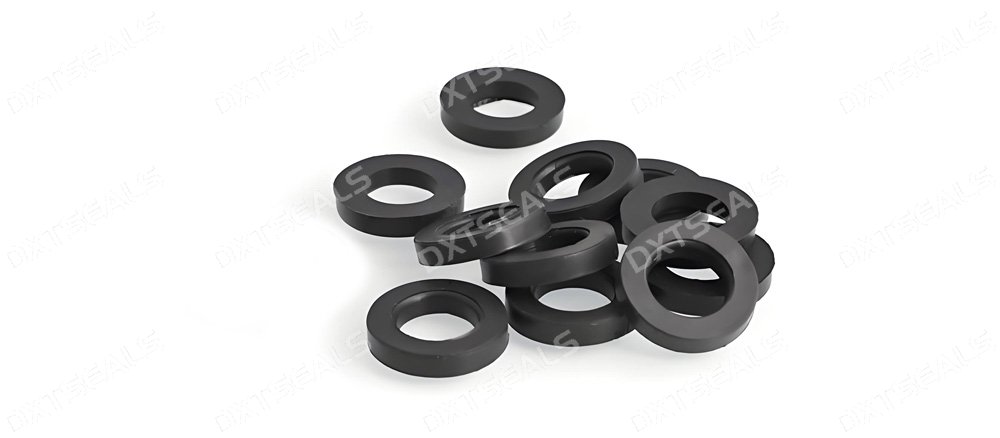Introduction
In modern buildings and industrial settings, HVAC systems (Heating, Ventilation, and Air Conditioning) are essential for maintaining comfortable indoor environments. To ensure these systems operate efficiently and effectively, sealing components such as rubber seals are used extensively. Rubber seals provide essential functionality by preventing air leaks, enhancing energy efficiency, and extending the lifespan of HVAC systems.
In this article, we will explore the applications and benefits of rubber seals in HVAC systems, explaining how they contribute to system performance and overall building efficiency.
1. What Are Rubber Seals?
Rubber seals are flexible, elastic components made from various types of rubber materials, including NBR (Nitrile Butadiene Rubber), EPDM (Ethylene Propylene Diene Monomer), and silicone rubber. These seals are designed to create airtight and watertight seals between two or more parts, preventing the leakage of air, water, or other substances.
In HVAC systems, rubber seals are used in a variety of applications where a reliable, durable seal is required to ensure optimal operation. Their flexibility and resilience make them an ideal solution for sealing areas subject to movement, temperature changes, and vibrations.
2. Key Applications of Rubber Seals in HVAC Systems
a) Sealing Ducts and Joints
One of the primary uses of rubber seals in HVAC systems is in ductwork. Ducts are designed to carry heated or cooled air throughout a building, but if air leaks out of the ducts, it can lead to energy loss, reduced efficiency, and uncomfortable indoor temperatures. Rubber gaskets or sealing strips are used around duct joints and connections to prevent air leakage, ensuring that the conditioned air reaches its intended destination without unnecessary loss.
b) Sealing Doors and Panels
Rubber seals are also used in HVAC unit doors and panels to maintain an airtight seal when the doors are closed. This is especially important for air handling units (AHUs), fan coil units, and chillers, where air leakage can reduce system efficiency. By applying rubber seals to door and panel edges, HVAC systems are able to maintain proper pressure and airflow while preventing the escape of conditioned air.
c) Insulation and Vibration Damping
HVAC systems, particularly large units like compressors and pumps, generate significant vibrations that can cause damage to nearby components over time. Rubber seals can also serve as vibration dampeners, absorbing and reducing vibrations to protect system components and reduce noise levels.
Furthermore, rubber seals help maintain thermal insulation around HVAC units. For example, sealing joints and gaps in the system helps prevent heat transfer, improving the overall energy efficiency of the unit.
d) Sealing Condensate Drains
In cooling systems, condensate drains remove excess moisture generated by the air conditioning process. Rubber seals are used around the drain pipes and connections to prevent leaks and ensure proper drainage. A reliable seal helps avoid water damage and maintains system cleanliness.
3. Benefits of Using Rubber Seals in HVAC Systems
a) Energy Efficiency
One of the key advantages of using rubber seals in HVAC systems is their role in improving energy efficiency. Leaky ducts and units can cause significant energy loss, leading to higher utility bills and unnecessary strain on HVAC equipment. By ensuring airtight seals with rubber materials, HVAC systems maintain proper pressure and airflow, reducing the workload on compressors, fans, and other components.
b) Preventing Air and Water Leaks
Rubber seals are essential in preventing air leaks and water leaks in HVAC systems. Leaks in the system not only compromise comfort levels but can also result in the buildup of moisture, potentially leading to mold growth and indoor air quality issues. With high-quality rubber seals, HVAC systems can maintain proper environmental conditions without worrying about unintended leaks.
c) Long-Term Durability
Rubber seals are known for their long-lasting durability, especially when made from high-quality materials such as EPDM or silicone rubber. These seals are resistant to environmental factors such as extreme temperatures, humidity, and UV exposure, making them ideal for use in HVAC systems. Rubber seals also perform well over time, reducing the need for frequent replacements and minimizing maintenance costs.
d) Noise Reduction
As previously mentioned, rubber seals serve as effective vibration dampeners, reducing the noise generated by HVAC systems. This is particularly important in commercial and industrial environments where noise pollution can affect productivity or comfort. By absorbing vibrations, rubber seals help create a quieter and more comfortable space.
e) Enhanced Comfort and Air Quality
By preventing air leaks, rubber seals help maintain consistent temperatures and proper ventilation throughout a building. This enhances the overall comfort of indoor spaces and ensures better indoor air quality (IAQ). Additionally, rubber seals prevent pollutants and contaminants from entering the HVAC system, ensuring that the air circulating within the building remains clean and healthy.
4. Types of Rubber Seals Used in HVAC Systems
a) EPDM (Ethylene Propylene Diene Monomer) Seals
EPDM rubber is highly resistant to extreme weather conditions, UV rays, and ozone, making it an ideal choice for outdoor HVAC units. It also has excellent thermal stability and is widely used in gaskets, O-rings, and sealing strips for HVAC applications.
b) NBR (Nitrile Butadiene Rubber) Seals
Nitrile rubber is widely used for its excellent oil resistance and durability. NBR seals are often used in HVAC systems where oil or grease exposure is a concern, such as in compressors or fan systems.
c) Silicone Rubber Seals
Silicone rubber is known for its high-temperature resistance and flexibility, making it a great option for high-temperature HVAC applications. It’s often used in sealing high-temperature ducts and air handling units.
5. Conclusion
Rubber seals are a vital component in maintaining the efficiency, reliability, and performance of HVAC systems. Their ability to prevent air and water leaks, improve energy efficiency, reduce noise, and enhance comfort makes them indispensable in modern HVAC designs. Whether used for sealing ducts, panels, or condensate drains, rubber seals provide a cost-effective and durable solution for HVAC applications.
By incorporating high-quality rubber seals in HVAC systems, building owners can improve system performance, reduce maintenance costs, and contribute to a more sustainable and comfortable indoor environment.

